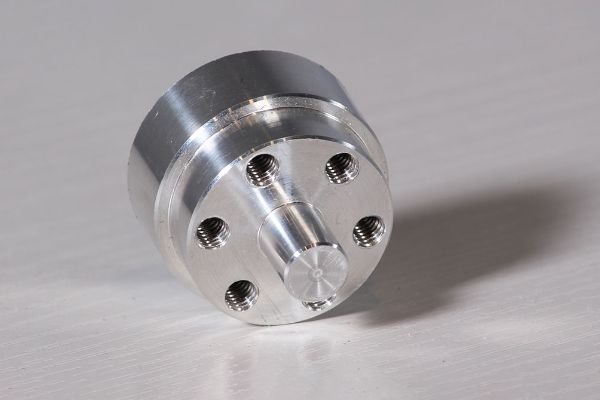Why Are CNC Turning Parts Crucial for Precision Engineering and High-Quality Manufacturing?
2025-02-25
CNC (Computer Numerical Control) turning has become an essential process in modern manufacturing, particularly when it comes to producing high-precision parts with complex geometries. From automotive components to aerospace machinery, CNC turning parts play a pivotal role in ensuring quality, efficiency, and consistency. But why are CNC turning parts so crucial for precision engineering? What makes this manufacturing method stand out in high-quality production, and how do CNC turning parts meet the demands of various industries?
What Are CNC Turning Parts and How Are They Produced?
CNC turning parts are created using a CNC lathe, which uses rotary motion to machine the workpiece while a cutting tool moves linearly along the material. The CNC (Computer Numerical Control) system controls the machine, ensuring precise movements and consistency throughout the process. CNC turning is particularly useful for producing cylindrical, conical, and spherical shapes, making it an ideal choice for parts such as shafts, pins, gears, and housings.
The process typically starts with a solid workpiece, which is then rotated at high speeds while a cutting tool removes material to achieve the desired shape. CNC programming ensures exact dimensions, tolerances, and surface finishes for each part, making it ideal for industries requiring precision and reliability.
What Are the Key Advantages of CNC Turning Parts?
1. High Precision and Accuracy
One of the standout features of CNC turning is its ability to produce parts with extremely tight tolerances. The automated system follows exact instructions, minimizing human error and ensuring each part is produced to the exact specifications required. This precision is critical in industries like aerospace, automotive, and medical device manufacturing, where even the slightest deviation can lead to failure or inefficiency.
2. Flexibility in Design
CNC turning allows for the creation of complex geometries and detailed designs. Custom-made parts can be produced in various sizes and configurations, making CNC turning an ideal choice for both one-off prototypes and high-volume production runs.
3. Consistency and Repeatability
Once a CNC turning program is written and tested, it can be used to produce identical parts in large quantities with consistency and repeatability. This ensures that every part meets the required standards and specifications, reducing the need for rework or quality checks.
4. Material Efficiency
CNC turning minimizes material waste by using advanced cutting techniques that maximize material usage. The precision of the process ensures that only the necessary material is removed, making it more cost-effective compared to traditional machining methods.
5. Reduced Labor Costs and Increased Productivity
Since CNC turning is largely automated, labor costs are reduced, and production time is minimized. The efficiency of the process allows manufacturers to produce more parts in less time, helping to meet high-demand needs while maintaining quality.
Where Are CNC Turning Parts Commonly Used?
- Automotive Industry: Used for producing engine components, transmission parts, brake systems, and other critical components that require high precision.
- Aerospace and Defense: Essential for producing parts like turbine blades, housings, and fasteners that require strict tolerances and high performance under extreme conditions.
- Medical Equipment: Used to create parts for medical devices, such as surgical instruments, implants, and diagnostic machines, where precision and reliability are paramount.
- Electronics and Robotics: Common in the production of components for machinery, sensors, and robotic parts where fine details and high performance are required.
- Consumer Products: Found in everyday items such as household appliances, tools, and hardware, providing precision for both functionality and aesthetics.
How to Choose the Right CNC Turning Parts for Your Application?
- Material Selection: Choose the right material based on the intended application, whether it’s stainless steel, aluminum, brass, or titanium. Each material offers unique properties such as corrosion resistance or lightweight strength.
- Tolerance Requirements: Specify the required tolerances based on the level of precision needed for your project. CNC turning can accommodate tight tolerances, but it’s essential to communicate your needs upfront.
- Surface Finish: Decide whether the part requires a polished, smooth, or textured finish. The surface finish can impact both the functionality and aesthetic appeal of the part.
- Batch Size and Production Time: Determine if you need a prototype or a full production run, as CNC turning is suitable for both small and large quantities.
Conclusion
CNC turning parts are a critical component of modern manufacturing, offering high precision, versatility, and cost-effectiveness for a wide range of industries. Their ability to produce complex designs with tight tolerances makes them indispensable in fields such as automotive, aerospace, medical, and electronics. By utilizing CNC turning, manufacturers can achieve consistent, high-quality results while reducing waste and production costs, ensuring that they meet the demands of today’s fast-paced industrial world.



